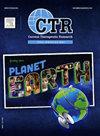Efficacy and Side Effect of Different Doses of Glucocorticoids on Sudden Deafness
IF 1.5
Q3 MEDICINE, RESEARCH & EXPERIMENTAL
Current Therapeutic Research-clinical and Experimental
Pub Date : 2025-01-01
DOI:10.1016/j.curtheres.2025.100794
引用次数: 0
Abstract
Background
Sudden deafness (SD) presents as rapid-onset sensorineural hearing loss within 72 hours, with unknown etiology. Current guidelines recommend systemic corticosteroids as first-line therapy, though high-dose regimens may increase risks of hypertension and hyperglycemia. No consensus exists on optimal SD treatment protocols.
Objective
To compare the treatment efficacy and side effects of different doses of glucocorticoids in patients with sudden deafness.
Methods
A total of 248 patients (from July 2020 to May 2022) with sudden deafness were divided into 3 groups based on their initial dexamethasone dosages: group A (adequate dose, 10 mg/d), group B (high dose, 15 mg/d), and group C (high dose, 20 mg/d). For treatment efficacy, the mean hearing threshold elevation was subsequently evaluated. For side effects, blood glucose and blood pressure were monitored in 14 patients with sudden deafness accompanied by diabetes and 20 patients with concomitant primary hypertension.
Results
There was no significant difference in the efficacy of various initial corticosteroid doses among different subgroups (all P > 0.05). Higher initial doses were associated with increased risk of rapid glucose in patients with diabetes, whereas no significant difference was observed in blood pressure fluctuation among the 3 groups.
Conclusions
The treatment efficacy of the 3 different corticosteroid doses in sudden deafness treatment was comparable; yet, an increased risk of rapid blood glucose increase was accompanied by the elevated dose of dexamethasone in patients with diabetes. Therefore, an adequate glucocorticoid (dexamethasone, 10 mg/d) could be the optimal regimen of patients with sudden deafness and diabetes.
不同剂量糖皮质激素治疗突发性耳聋的疗效及不良反应
背景:突发性耳聋(SD)表现为72小时内快速发作的感音神经性听力损失,病因不明。目前的指南推荐全身性皮质类固醇作为一线治疗,尽管大剂量方案可能增加高血压和高血糖的风险。对于最佳的SD治疗方案尚无共识。目的比较不同剂量糖皮质激素治疗突发性耳聋的疗效和不良反应。方法选取2020年7月~ 2022年5月248例突发性耳聋患者,根据其初始地塞米松剂量分为3组:A组(足量,10 mg/d)、B组(高剂量,15 mg/d)、C组(高剂量,20 mg/d)。对于治疗效果,随后评估平均听阈升高。对14例伴有糖尿病的突发性耳聋患者和20例伴有原发性高血压的患者进行血糖和血压监测。结果不同亚组间不同初始皮质类固醇剂量的疗效差异无统计学意义(P >;0.05)。较高的初始剂量与糖尿病患者快速血糖的风险增加相关,而三组之间的血压波动没有显著差异。结论3种不同剂量皮质类固醇治疗突发性耳聋的疗效具有可比性;然而,在糖尿病患者中,地塞米松剂量的增加会增加血糖快速升高的风险。因此,适当的糖皮质激素(地塞米松,10 mg/d)可能是突发性耳聋合并糖尿病患者的最佳方案。
本文章由计算机程序翻译,如有差异,请以英文原文为准。
求助全文
约1分钟内获得全文
求助全文
来源期刊
CiteScore
3.50
自引率
0.00%
发文量
31
审稿时长
3 months
期刊介绍:
We also encourage the submission of manuscripts presenting preclinical and very preliminary research that may stimulate further investigation of potentially relevant findings, as well as in-depth review articles on specific therapies or disease states, and applied health delivery or pharmacoeconomics.
CTR encourages and supports the submission of manuscripts describing:
• Interventions designed to understand or improve human health, disease treatment or disease prevention;
• Studies that focus on problems that are uncommon in resource-rich countries;
• Research that is "under-published" because of limited access to monetary resources such as English language support and Open Access fees (CTR offers deeply discounted English language editing);
• Republication of articles previously published in non-English journals (eg, evidence-based guidelines) which could be useful if translated into English;
• Preclinical and clinical product development studies that are not pursued for further investigation based upon early phase results.

 求助内容:
求助内容: 应助结果提醒方式:
应助结果提醒方式:


